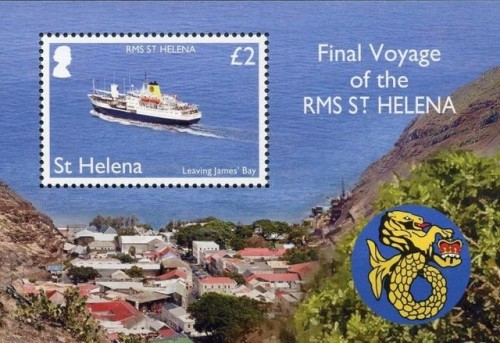Originally uninhabited when first discovered by the Portuguese in the early 1500s, Saint Helena (the
Originally uninhabited when first discovered by the Portuguese in the early 1500s, Saint Helena (there are a host of discovery and naming myths associated with Saint Helena, all of which are plausible and none of which are resolutely verifiable, although it is generally understood it was named after Saint Helena of Constantinople) is a tiny volcanic outcropping of stone in the middle of the South Atlantic, over a thousand miles from the coast of Angola and Namibia, 800 miles from Ascension Island, and 1,300 miles from Tristan da Cunha. It is Britain’s second-oldest possession (after Bermuda), but passed through a number of colonial hands since its discovery, being, as it is, an important stopover for a number of industries in those early days of exploration.Stamp details:Top left:Issued on: January 1, 1856From: Jamestown, Crown Colony of Saint HelenaMC #1Top right:Issued on: July 1, 1982From: Jamestown, Dependent Territory of Saint Helena and DependenciesMC #361Middle stamps:Issued on: May 21, 2002From: Jamestown; Overseas Territory of Saint Helena and DependenciesMC #836-839Stamp on bottom:Issued on: February 10, 2018 From: Jamestown; Overseas Territory of Saint Helena, Ascension and Tristan da CunhaSG #MS1274 Recognized as a sovereign state by the UN: NoClaimed by: British Overseas TerritoryMember of the Universal Postal Union: Yes (BOTs joined on April 1, 1877) -- source link
Tumblr Blog : silentambassadors.tumblr.com
#saint helena#st helena#st helena#stamps#philately#july 29#princess diana#lady di#queen victoria

